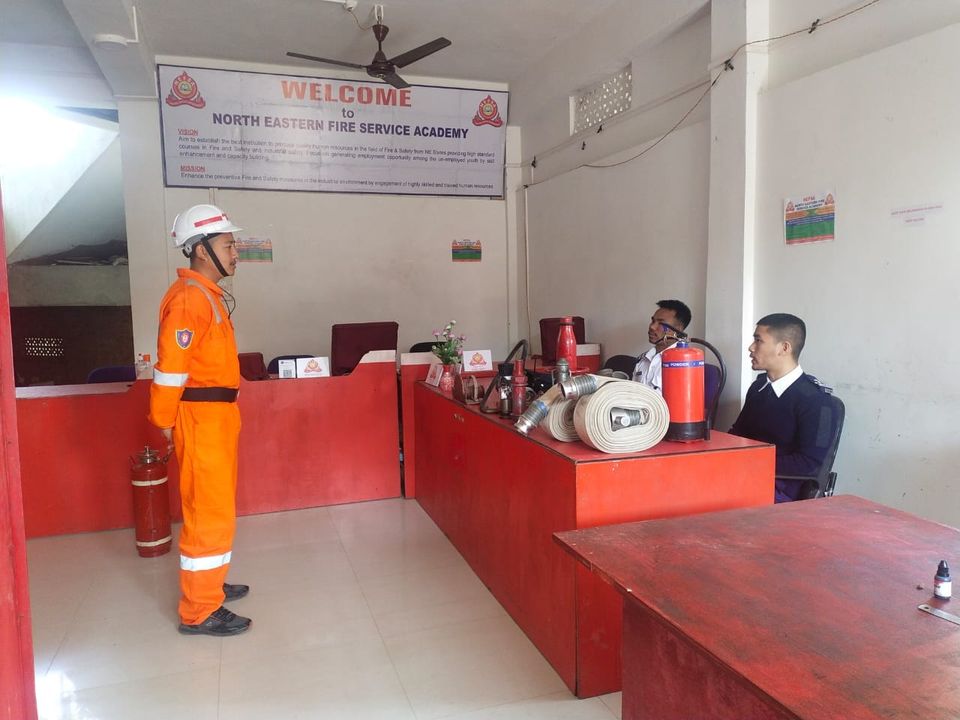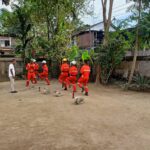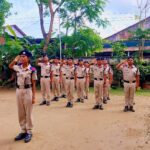Fires move fast and create smoke, heat, and confusion. Panic makes it harder to think clearly and slows escape which is exactly why staying calm saves lives. This guide from NEFSA Fire Academy combines official guidance and best practices (Red Cross, NFPA, FEMA, NDMA, UL/FSRI) into simple, memorable steps you can use in an emergency and practice before one ever happens.
Why calm matters (quick science)?
Panic triggers the body’s fight-or-flight response: rapid breathing, racing heart, tunnel vision, and poor decision-making. In a fire, those physiological reactions can cause people to freeze, run into danger, or forget escape routes. Deliberate breathing and a practiced plan help you override panic and act quickly and safely. For practical survival, the top fire-safety rules are: get out, stay out, call for help — and use planned exits.
Immediate steps to stay calm and escape safely
1. Stop — Breathe — Decide (first 10 seconds)
When you hear alarm or see smoke, stop what you’re doing. Take three slow, deep breaths (inhale for 4, exhale for 6). Deep breathing lowers heart rate and buys seconds to think. Then use your practiced plan: which exit, who to alert, where to meet. (Practice makes this reaction automatic.)
2. Shout “FIRE” and alert others but don’t freeze
Shout clearly and loudly while moving toward your exit so others can wake and follow. Yelling once or twice while starting to move is better than shouting and then standing in place. Once you’re moving, focus on escape leave belongings behind.
3. Use your escape plan; know two exits
Always have (and practice) a Plan A and Plan B for every room: the door and an alternate (window, secondary door). If a door feels warm, do not open it use the second exit. Practicing twice a year makes choices automatic under stress.
4. Stay low to avoid smoke
Smoke and toxic gases rise. Drop to hands-and-knees or crawl low under the smoke layer clean air is near the floor. Move quickly but steadily; crawling keeps your airway clearer and reduces inhalation of dangerous fumes.
5. Close doors behind you if possible
Closing doors slows fire spread, reduces heat and poisonous gases, and can buy critical minutes for escape or rescue. The “Close Before You Doze” research demonstrates a dramatic difference in temperature and toxic gasses with closed doors. If you can close doors safely while exiting, do so.
6. Once outside: stay out & call for help
Move to your pre-planned meeting spot, account for family or coworkers, and call emergency services. Do not re-enter for possessions or pets — tell firefighters if someone is missing and where they might be.
Practical habits that reduce panic (prepare now, stay calm later)
-
Install and test smoke alarms on every level and outside sleeping areas they double your chance of surviving a home fire. Test monthly and replace batteries per manufacturer guidance.
-
Practice escape drills with everyone in your household or workplace at least twice a year; include night drills (sleeping occupants).
-
Create a ‘go bag’ with meds, phone chargers, ID and keep it accessible if you live in fire-prone areas (wildfires) or multi-story buildings.
-
Teach children and vulnerable people: simple actions stop, drop, crawl, meet outside and designate helpers for those who need assistance.
Quick printable checklist (keep near exits / fridge / workplace noticeboard)
-
Smoke alarms installed & tested monthly
-
Family/office escape plan with two exits per room
-
Agreed meeting point outside (safe distance)
-
Go-bag ready if needed (wildfire/high-risk zones)
-
Night habit: bedroom door closed before sleeping
-
Everyone practiced escape drill in last 6 months
(Use this checklist as a poster or shared PDF for staff/family.)
What to do if you can’t get out?
-
Close the door, stuff cracks with cloth, signal from window (bright cloth or phone light), call emergency services and tell them your exact location. Keep low and cover nose/mouth with a damp cloth if possible. Rescue teams prioritize saved reports like this.
FAQs (short & SEO-friendly)
Q: Should I open a door to check for fire?
A: Feel the door and doorknob with the back of your hand. If warm, don’t open use alternate exit or signal for rescue.
Q: Is it safe to use elevators during a fire?
A: No always use stairs. Elevators can fail or stop at the fire floor.
Q: How quickly do modern house fires spread?
A: Fires move much faster today due to synthetic materials people often have only a few minutes to escape, which is why planning and closed doors at night matter.
Final words from NEFSA Fire Academy
Staying calm during a fire is a habit you build: prepare, practice, then follow simple steps when the alarm sounds. NEFSA Fire Academy trains individuals and organizations in practical fire response, evacuation planning, and hands-on drills so calm becomes automatic under stress. If you’d like a customized workplace drill, community talk, or certification course, NEFSA can help contact us to schedule training.
Contact us today to know more about admissions, batch schedules, and course details.
Visit: www.nefsaindia.com
Location: Dibrugarh, Assam
For More Blogs:- Click here







